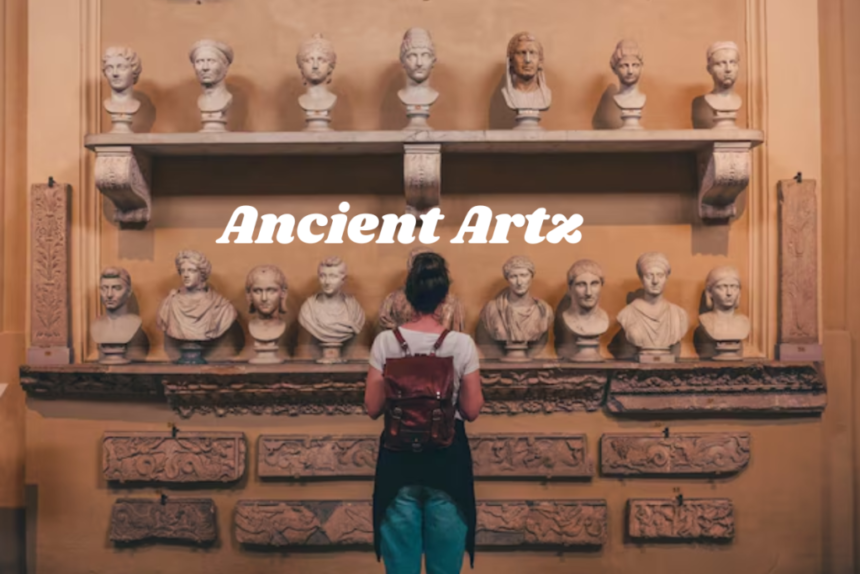Introduction to Ancient Artz
Art has always been a window into the soul of humanity. Ancient Artz, in particular, serves as a powerful testament to our collective history and creativity. These timeless expressions capture the essence of lives lived long before us, telling stories that resonate across generations. From intricate carvings on stone tablets to vibrant frescoes adorning ancient walls, each piece invites us to explore the thoughts, beliefs, and emotions of those who came before.
As we delve into this fascinating realm, we’ll uncover why preserving these art forms is crucial for future generations. Join me on a journey through time as we celebrate the rich tapestry woven by cultures around the world and discover how their artistic achievements shape our modern society today.
The Importance of Preserving Ancient Artz
Preserving ancient artz is crucial for understanding our shared history. These creations offer a glimpse into the lives, beliefs, and cultures of civilizations long gone. Each piece tells a story that connects us to our ancestors.
As time passes, many forms of ancient art become vulnerable to decay and destruction. Environmental factors, urbanization, and neglect can lead to irreversible loss. Protecting these treasures ensures future generations can appreciate their beauty.
Moreover, ancient artz serves as an educational tool. It provides insights into artistic techniques and cultural practices of different eras. Museums play a vital role in this preservation effort by curating exhibitions that celebrate these works.
Investment in restoration projects also fosters community engagement. When people recognize the value of preserving their heritage, they build stronger ties with their culture.
By safeguarding ancient artz today, we honor the creativity and expressions of humanity from ages past.
Ancient Art in Different Cultures
Ancient Artz serves as a vibrant reflection of diverse cultures around the globe. Each civilization infused its unique beliefs, traditions, and values into their artistic expressions.
In Egypt, hieroglyphics adorned tombs, telling stories of pharaohs and deities. This intricate script was more than decoration; it bridged the earthly with the divine.
Meanwhile, ancient Indian art flourished in temples through elaborate carvings that depicted scenes from mythology. These images captured spiritual narratives and showcased craftsmanship.
Over in Mesoamerica, civilizations like the Maya created stunning pottery and sculpture imbued with symbolism related to agriculture and astronomy. Their art communicated essential aspects of daily life intertwined with cosmic significance.
From African masks used in rituals to Greek sculptures portraying human beauty idealized by philosophy—each form tells a story beyond mere visuals. Ancient Artz connects us across time and space through shared human experiences expressed creatively.
How Ancient Art Shaped Modern Society
Ancient art is more than a visual feast; it’s a foundation upon which modern society stands. The themes explored in ancient works resonate with contemporary issues, reflecting the human experience across time.
From mythology to social hierarchy, these expressions have inspired countless artists today. They provide insight into our past, influencing literature, fashion, and design. Architecture too owes much to ancient aesthetics—think of the column styles derived from Greek and Roman structures still gracing our skylines.
Furthermore, ancient art challenges us to engage with cultural diversity. Each piece tells a story that enriches our understanding of humanity. As we study these artifacts, we not only preserve history but also learn about resilience and creativity.
The philosophies embedded in these artworks continue to shape ethical frameworks and societal values today. In essence, ancient art serves as both a mirror and a guide for navigating modern complexities with depth and wisdom.
Techniques and Materials Used in Creating Ancient Artz
Ancient Artz reflects the creativity of its time, showcasing diverse techniques and materials. Artists utilized natural resources found in their surroundings, making each piece a product of local culture.
Clay was a favored medium for sculptors. Its malleability allowed for intricate designs, often enhanced with decorative paint or glazes. Stone carving demanded immense skill and patience; tools were crafted from harder stones to shape softer ones like limestone or marble.
Pigments derived from minerals colored paintings on cave walls, pottery, and textiles. The use of ochre is especially notable—its earthy tones connect us to early human expression.
Wood also played a significant role in ancient artistry. Carved figures adorned temples and homes, telling stories through their forms.
Each technique reveals not just artistic ability but also an understanding of available resources and cultural significance behind every creation.
Famous Examples of Ancient Art and Their Significance
The Great Pyramid of Giza stands as a monumental testament to ancient Egyptian ingenuity. This architectural marvel not only served as a tomb for Pharaoh Khufu but also symbolized the civilization’s beliefs about the afterlife.
Equally captivating is the Rosetta Stone, an artifact that unlocked the mysteries of Egyptian hieroglyphs. Its inscriptions in multiple languages paved the way for modern understanding of ancient texts.
In Greece, sculptures like those from the Parthenon showcase idealized human forms and divine narratives. They reflect democratic ideals and cultural values that continue to influence art today.
Meanwhile, cave paintings in Lascaux, France reveal early humans’ connection with nature and spirituality. These vivid depictions offer insight into prehistoric life and thought processes.
Each piece tells its own story, contributing layers to our understanding of humanity’s journey through time.
The Role of Technology in Preserving and Studying Ancient Artz
Technology has transformed how we approach ancient Artz. With advancements in digital imaging, researchers can explore intricate details that the naked eye might miss. This precision allows for a deeper understanding of artistic techniques and cultural significance.
3D scanning also plays a crucial role in preservation. It enables us to create detailed replicas without disturbing the original artwork. These digital copies can be studied and shared globally, expanding access to everyone interested in ancient cultures.
Additionally, virtual reality provides immersive experiences that bring historical contexts to life. Viewers can step into recreated environments where these art pieces were originally displayed.
Data analysis tools help historians uncover patterns across different artifacts, revealing connections between various civilizations. Such insights deepen our appreciation of human creativity throughout history.
In this rapidly evolving landscape, technology serves as a bridge connecting past and present, ensuring that ancient Artz continues to inspire future generations.
Conclusion: Appreciating the Timeless Beauty of Ancient Artz
Ancient Artz encapsulates the creativity, beliefs, and emotions of humanity across time. These timeless expressions remind us of our shared history and cultural diversity. Each piece tells a story, inviting us to explore the lives of those who came before us.
As we admire these works, it’s essential to recognize their significance in shaping modern society. Ancient art has influenced everything from architecture to literature, leaving an indelible mark on contemporary culture.
Preserving ancient art is crucial for future generations. Through technology and scholarly efforts, we can study and protect these treasures that speak volumes about human experience.
Appreciating Ancient Artz goes beyond mere observation; it’s an invitation to connect with our past. By immersing ourselves in these artistic expressions, we gain insight into different cultures and perspectives.
The beauty of ancient art lies not only in its visual appeal but also in its ability to bridge gaps between eras. It’s a testament to human resilience and creativity—qualities that continue to inspire artists today.
By cherishing ancient artworks for their historical value as well as their aesthetic charm, we keep alive the stories they tell—a celebration of artistry that transcends time itself.




